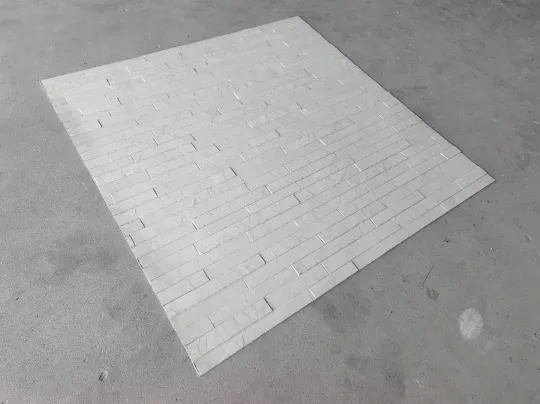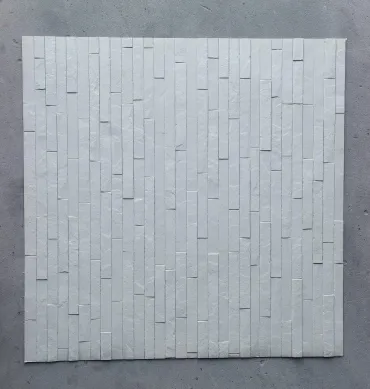
Masonry Stone Types and Prices 2025

You're standing in your backyard, dreaming about that stone patio. Or maybe you're renovating your fireplace and wondering if marble's worth the splurge. We've all been there - staring at samples, trying to balance beauty, budget, and practicality. By the end of this guide, you'll navigate 2025's stone landscape with the confidence of a seasoned mason.
Prices aren't just numbers on a page - they're stories about global quarries, aging artisans, and tectonic forces that created these marvels over millennia. Let's explore what really moves the needle on cost and how upcoming trends will impact your project.
What’s Shaking the Stone World in 2025?
Three seismic shifts are transforming masonry:
Reclamation Revolution Old barn stones and salvaged factory blocks are outselling virgin quarry stone in the Northeast. Why? Each piece comes with visible history - fossil imprints, century-old tool marks, natural weathering that takes decades to replicate.
Robotic Resurgence At Italy's Carrara quarries, AI-guided saws now cut with 0.2mm precision. This doesn't replace master carvers - it frees them for intricate details impossible by machine. You'll see this in custom mantlepieces where floral motifs seem to bloom from stone.
Thermal Masks Arizona researchers embed phase-change materials within limestone. Result? Walls absorbing heat at 2pm gradually release warmth after sunset. Early adopters report 30% HVAC savings. If your patio gets brutal afternoon sun, this technology's worth tracking.

Stone Types Decoded: Beauty Meets Practicality
Limestone: The Friendly Workhorse
The beige sweater of masonry - comforting, reliable, but with hidden versatility. Indiana quarries now produce hues from creamy whites to storm-cloud grays previously only found in French varieties. Its softness makes it perfect for curved garden walls but think twice for heavy-traffic floors.
Granite: The Unshakeable Anchor
More than just countertops, granite's resurgence in outdoor kitchens comes from new heat-resistant sealants. Brazilian exporters pioneered "leathered" finishes - smooth to touch but light-absorbing for reduced glare. Perfect for pool surrounds where wet feet meet hot sun.
Slate: The Understated Artist
Vermont's multi-hued slate forms through mineral-rich mud compression. No two stacks are identical - it's geology's mood ring. New cleavage techniques produce ultra-thin (5mm) tiles previously impossible, ideal for accent walls without structural bulk.
Sandstone: The Timeless Storyteller
Ohio's Berea sandstone contains 350-million-year-old ripple marks from ancient shorelines. Quarriers now "book match" slabs - opening stone like pages to reveal mirror-image patterns. Costs climb 20% for this, but creates gallery-worthy fireplace surrounds.
2025 Price Reality Check: Beyond the Sticker Shock
| Stone Type | Material Cost (per sq ft) | Installation Range | Hidden Cost Alert | Lifespan |
|---|---|---|---|---|
| Limestone | $15–$35 | $30–$50 | Soft stone needs frequent sealing (+$1.5/sq ft annually) | 50+ years |
| Granite | $50–$200 | $45–$75 | Structural reinforcement often required for overhangs | 100+ years |
| Slate | $10–$30 | $40–$60 | Lower grades delaminate – insist on "architectural grade" | 75 years |
| Sandstone | $25–$40 | $35–$55 | Porous stone stains easily in high-splash zones | 65+ years |
Real talk: Labor often exceeds material costs by 100-200%
Why the labor premium? Seasoned masons spot flaws invisible to homeowners. They'll reject 1 in 5 stones for hidden fractures that weather would expose in 5 years. That expertise prevents costly rework - especially critical with today's slate shortages.
The Ethical Stone Revolution
"Natural stone manufacturers face more scrutiny than ever before. We now audit water reclamation at quarries," explains Sofia Martinez of the Global Stone Initiative. "One Portuguese granite producer repurposes slurry into terrazzo tiles - closing the loop beautifully."
Carbon counterweights: Local fieldstone transported 50 miles has lower emissions than "eco" bamboo shipped 8,000 miles. Pennsylvania quarries now offer region-specific carbon calculators.
Future-Proofing Your Stone Investment
- Tech-Integrated Masonry: MIT prototypes limestone blocks with embedded fiber optics that glow gently at night. Still experimental but monitor for outdoor applications.
- Modular Innovation: Interlocking dry-stack systems cut mortar costs by 60% while allowing seasonal reconfiguration. Ideal for temporary event spaces.
- Fracture Prediction Sensors: Micro-sensors in foundation stones alert homeowners to soil shift before cracks appear. Currently $15/sq ft premium in earthquake zones.
Conversations to Have With Your Mason
Don't just ask "What's cheapest?" Surface these critical questions:
"Can we visit the yard together to hand-pick slabs?" Your presence prevents substitution with lower-grade batches.
"Show me your repointing technique." Crumbling mortar accounts for 70% of early failures. Proper technique packs joints tight.
"What seasonal timing saves money?" Masons charge 20% less in late winter when demand dips. Cover work with thermal blankets.
As sunlight hits your new stone wall tomorrow, or years from now, each variation tells a story deeper than trends. You're not just stacking rock - you're collaborating with forces older than dinosaurs. The best masons aren't just technicians; they're interpreters of geological time. When chosen wisely, your stone will outlive us all - evolving in color and texture while whispering stories of ancient seas, volcanic fury, and human hands that shaped it.
The cost isn't just in dollars per square foot. It's an investment in permanence in our disposable world. Choose deliberately, maintain lovingly, and pass it down.
Tags:
Recommend Products











